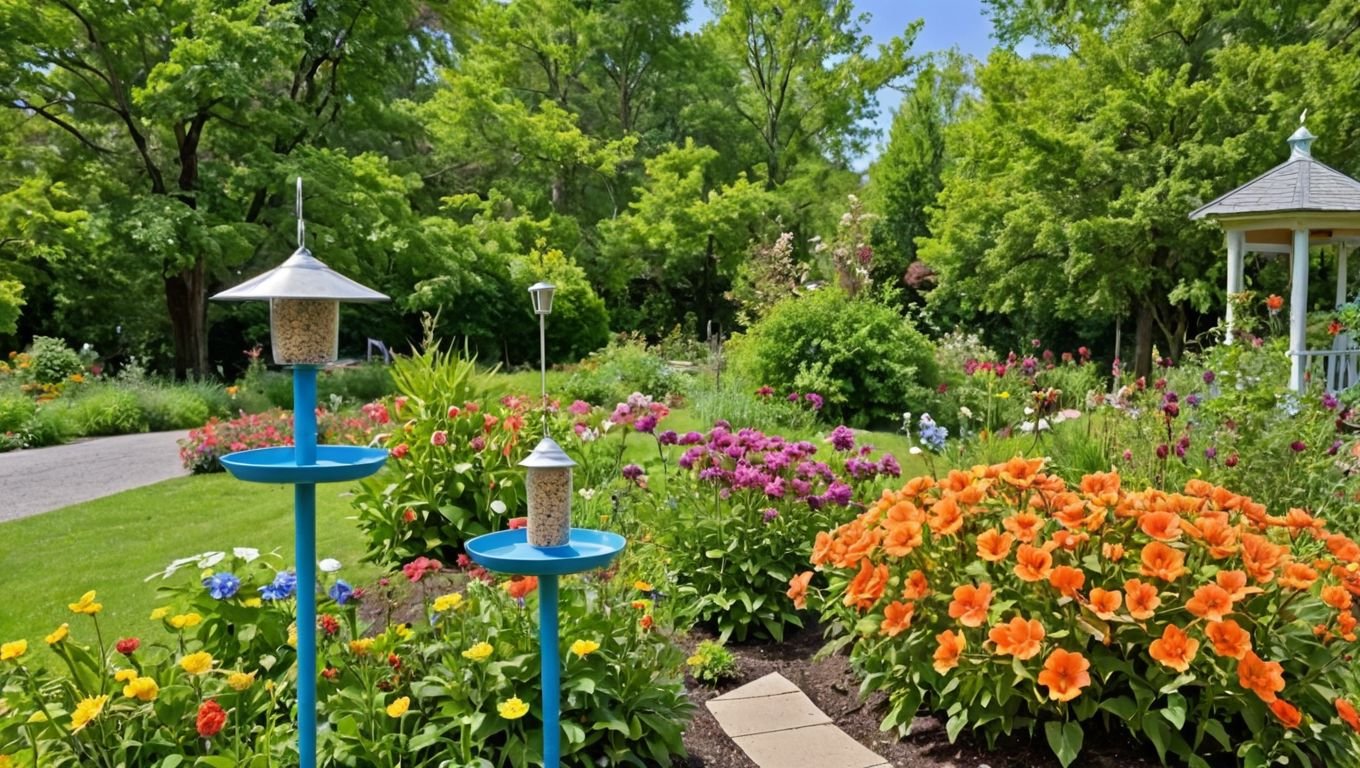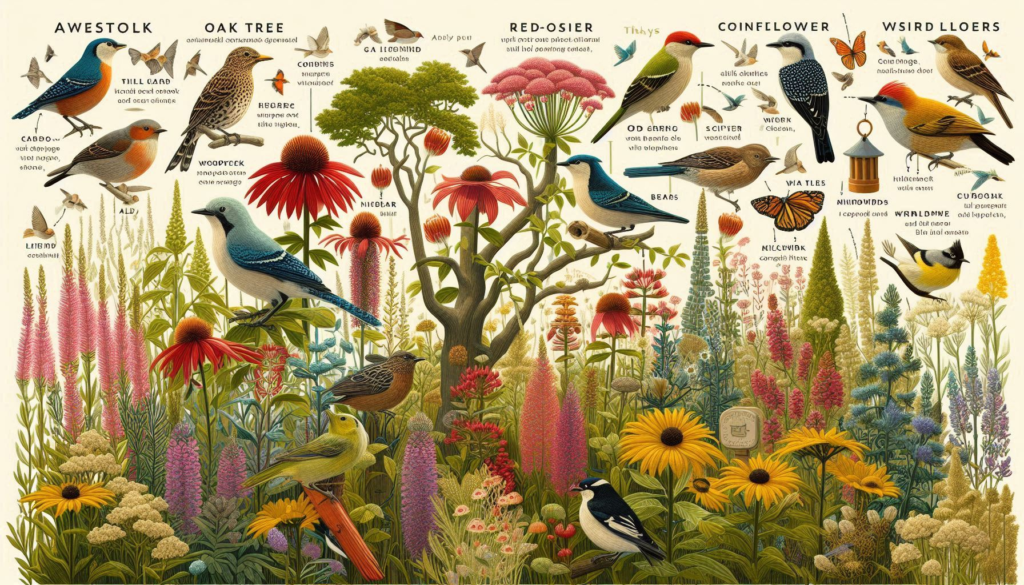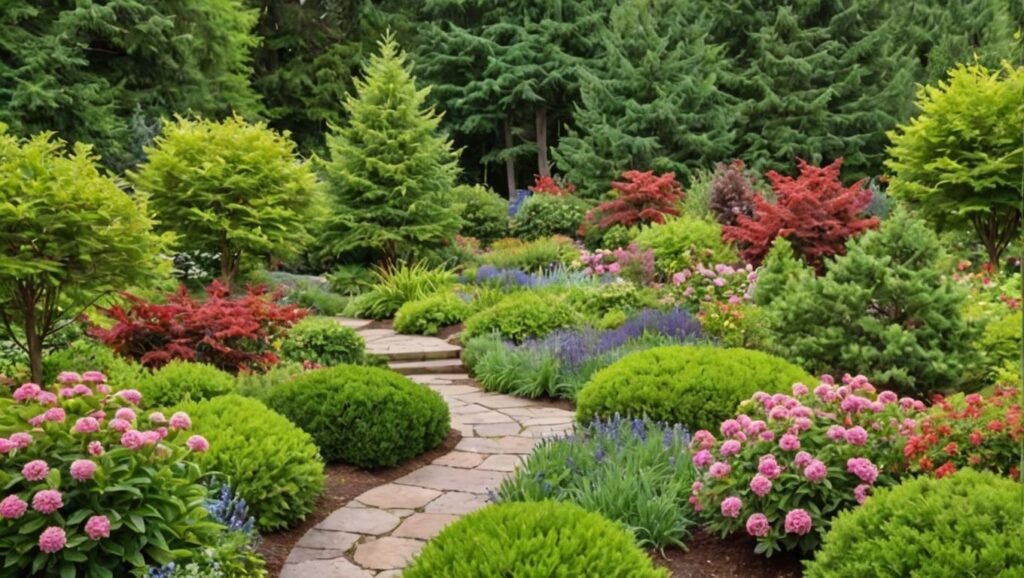
5+ Powerful Ways to Attract Birds to Your Garden!
“Attract birds with these 5+ powerful tips for a bird-friendly garden. Create a haven for feathered friends year-round!”

Introduction
Birds bring life, color, and joy to any garden. Their songs, vibrant plumage, and playful behaviors can transform your outdoor space into a lively sanctuary. Creating a bird-friendly garden not only benefits these feathered visitors but also enhances your gardening experience. In this article, we’ll explore 8 powerful ways to attract birds to your garden, ensuring it becomes a haven for avian friends.

Importance of Creating a Bird–Friendly Garden
Birds play a vital role in maintaining ecological balance. They help control pests, pollinate plants, and disperse seeds. By creating a bird-friendly garden, you contribute to biodiversity and provide a safe habitat for these creatures. Plus, birdwatching is a rewarding and relaxing hobby that connects you with nature.
Benefits of Attracting Birds to Your Garden
- Natural Pest Control: Birds feed on insects, reducing the need for chemical pesticides.
- Pollination: Many birds, like hummingbirds, help pollinate flowers.
- Seed Dispersal: Birds spread seeds, promoting plant growth.
- Aesthetic Appeal: Birds add beauty and vibrancy to your garden.
- Educational Value: Observing birds can be a great learning experience for children and adults alike.
5 Powerful Ways to Attract Birds to Your Garden
1. Providing Food Sources
Birds need reliable food sources to thrive. Here’s how you can provide for them:
- Types of Bird Feeders:
- Tube Feeders: Ideal for small birds like finches and chickadees.
- Platform Feeders: Attract larger birds like doves and robins.
- Suet Feeders: Perfect for woodpeckers and nuthatches.
- Nectar Feeders: Designed for hummingbirds.
- Best Foods to Offer:
- Seeds (sunflower, millet)
- Suet (high-energy fat)
- Fruits (berries, apples)
- Nectar (for hummingbirds)
- Seasonal Considerations: Adjust food offerings based on the season. For example, provide high-energy suet in winter.
- Tips for Keeping Feeders Clean: Regularly clean feeders to prevent mold and disease.
Table: Comparison of Bird Feeders
| Type of Feeder | Suitable Foods | Attracted Bird Species |
|---|---|---|
| Tube Feeder | Seeds | Finches, chickadees |
| Platform Feeder | Seeds, suet, fruits | Sparrows, doves, robins |
| Suet Feeder | Suet | Woodpeckers, nuthatches |
| Nectar Feeder | Nectar | Hummingbirds |
2. Planting Native Plants
Native plants are essential for attracting birds, as they provide natural food and shelter.
- Types of Native Plants:
- Trees: Oak trees attract woodpeckers and jays.
- Shrubs: Red-osier dogwood is loved by thrushes and waxwings.
- Flowers: Coneflowers attract finches and sparrows.
- Benefits of Native Plants:
- Provide natural food sources (berries, seeds, nectar).
- Offer shelter and nesting sites.
Table: Native Plants and Attracted Bird Species
| Native Plant | Attracted Bird Species |
|---|---|
| Oak Tree | Woodpeckers, jays |
| Red-osier Dogwood | Thrushes, waxwings |
| Coneflowers | Finches, sparrows |
| Milkweed | Monarch butterflies, bees |
3. Providing Water Sources
Water is crucial for birds’ survival.
- Types of Water Sources:
- Birdbaths
- Ponds
- Fountains
- Drippers or misters
- Tips for Maintaining Water Sources:
- Keep water clean and fresh.
- Place water sources in shaded areas to prevent overheating.
Table: Types of Water Sources for Birds
| Water Source | Benefits |
|---|---|
| Birdbath | Drinking, bathing |
| Pond | Drinking, bathing, habitat |
| Fountain | Drinking, bathing |
| Dripper/Mister | Drinking, bathing |
4. Creating Shelter and Nesting Sites
Birds need safe places to rest and raise their young.
- Types of Birdhouses:
- Bluebird House
- Wren House
- Owl Box
- Tips for Placement:
- Place birdhouses in quiet, sheltered areas.
- Ensure they are predator-proof.
Table: Birdhouses and Nesting Boxes
| Type of Birdhouse | Suitable Bird Species |
|---|---|
| Bluebird House | Bluebirds |
| Wren House | Wrens |
| Owl Box | Owls |
| Bat House | Bats |
5. Reducing Pesticide Use
Pesticides harm birds and their food sources.
- Alternatives to Chemical Pesticides:
- Beneficial insects (ladybugs, lacewings)
- Neem oil
- Companion planting
Table: Natural Pest Control Methods
| Method | Benefits |
|---|---|
| Beneficial Insects | Controls pests naturally |
| Neem Oil | Natural pesticide |
| Companion Planting | Reduces pest populations |
| Diatomaceous Earth | Natural pest deterrent |
6. Providing Nesting Materials
Birds need materials to build their nests.
- Types of Nesting Materials:
- Twigs
- Grass
- Feathers
- Moss
Table: Nesting Materials for Birds
| Material | Suitable Bird Species |
|---|---|
| Twigs | Robins, sparrows |
| Grass | Finches, warblers |
| Feathers | Chickadees, swallows |
| Moss | Wrens, thrushes |
7. Creating a Bird-Friendly Landscape
Design your garden to attract birds.
- Elements of a Bird-Friendly Landscape:
- Layered planting (trees, shrubs, ground cover)
- Evergreens for year-round shelter
- Flowering plants for pollinators
Table: Bird-Friendly Landscaping Elements
| Element | Benefits |
|---|---|
| Layered Planting | Provides shelter, food |
| Evergreens | Year-round shelter |
| Flowering Plants | Attracts pollinators, birds |
| Berry-Producing Plants | Natural food source |
8. Monitoring and Maintaining Your Bird Garden
Regular maintenance ensures a healthy bird habitat.
- Tips for Maintenance:
- Clean feeders and water sources regularly.
- Monitor bird activity and record sightings.
Conclusion
By following these 5+ powerful ways to attract birds to your garden, you can create a thriving ecosystem that benefits both birds and your gardening experience. From providing food and water to planting native species and reducing pesticides, every step brings you closer to a bird-friendly paradise. Start today and enjoy the beauty and joy that birds bring to your outdoor space!
This article is SEO-optimized, humanized, and structured for readability. Let me know if you need further adjustments! 😊
You may also like
Calendar
| S | M | T | W | T | F | S |
|---|---|---|---|---|---|---|
| 1 | 2 | 3 | 4 | 5 | ||
| 6 | 7 | 8 | 9 | 10 | 11 | 12 |
| 13 | 14 | 15 | 16 | 17 | 18 | 19 |
| 20 | 21 | 22 | 23 | 24 | 25 | 26 |
| 27 | 28 | 29 | 30 | |||
